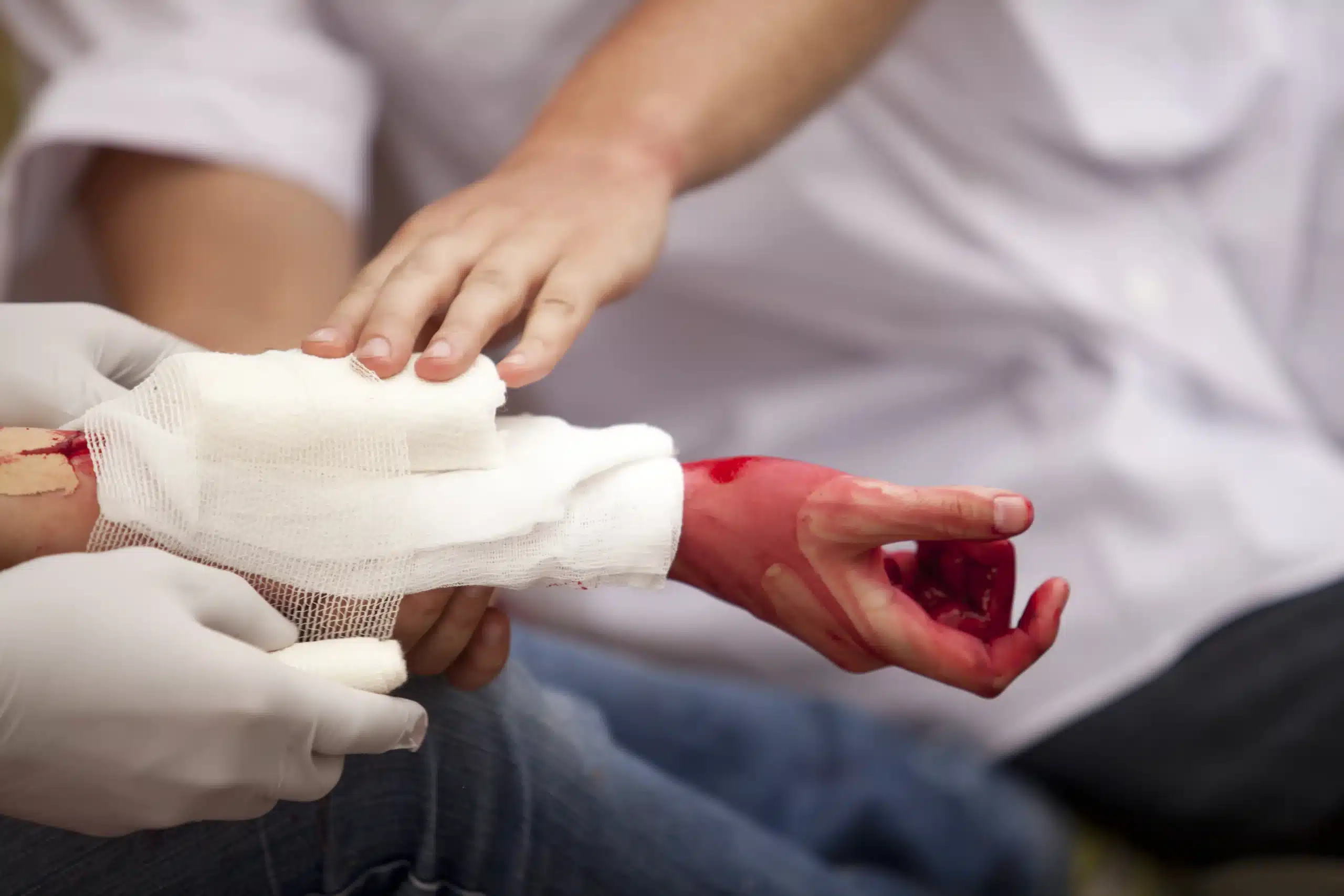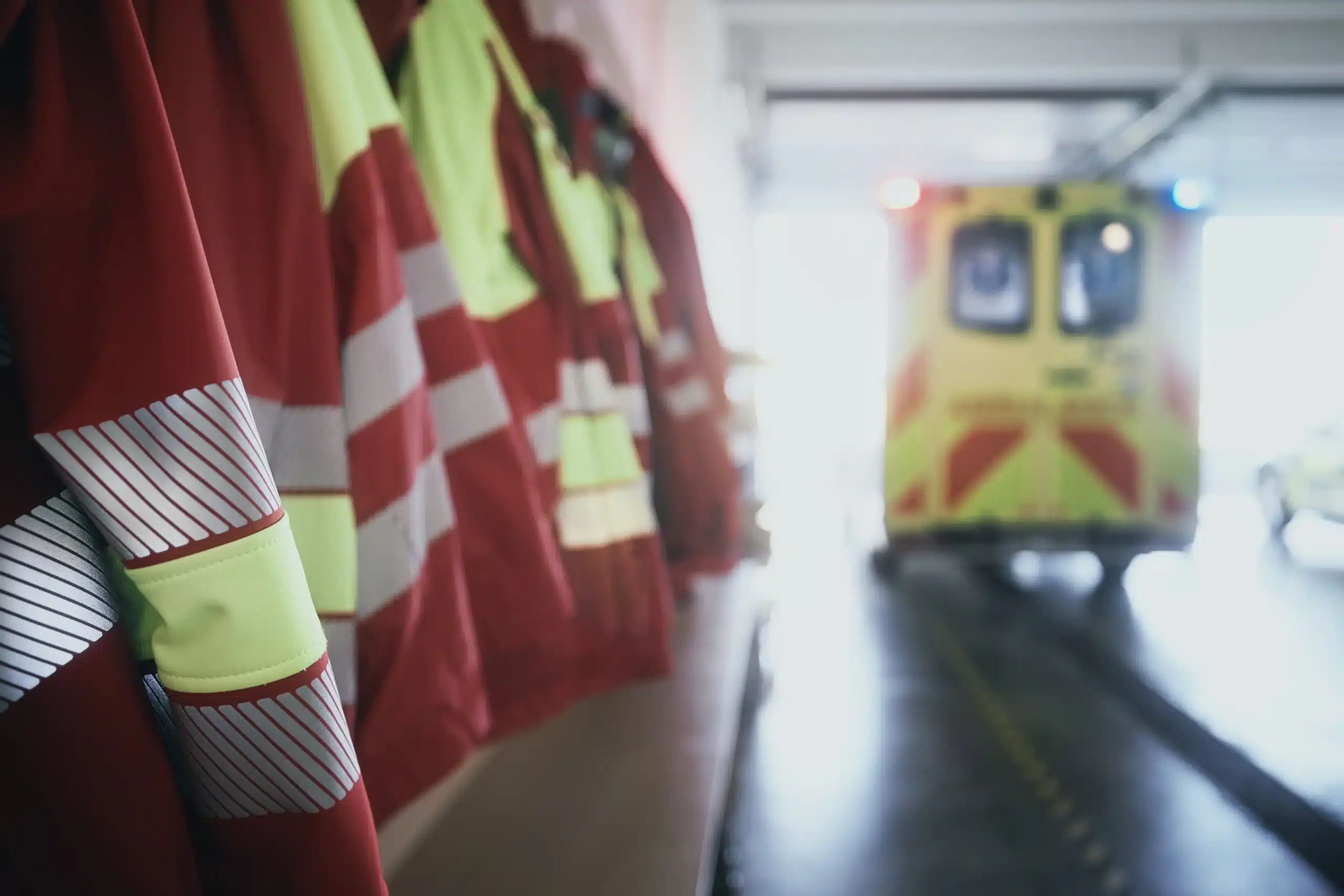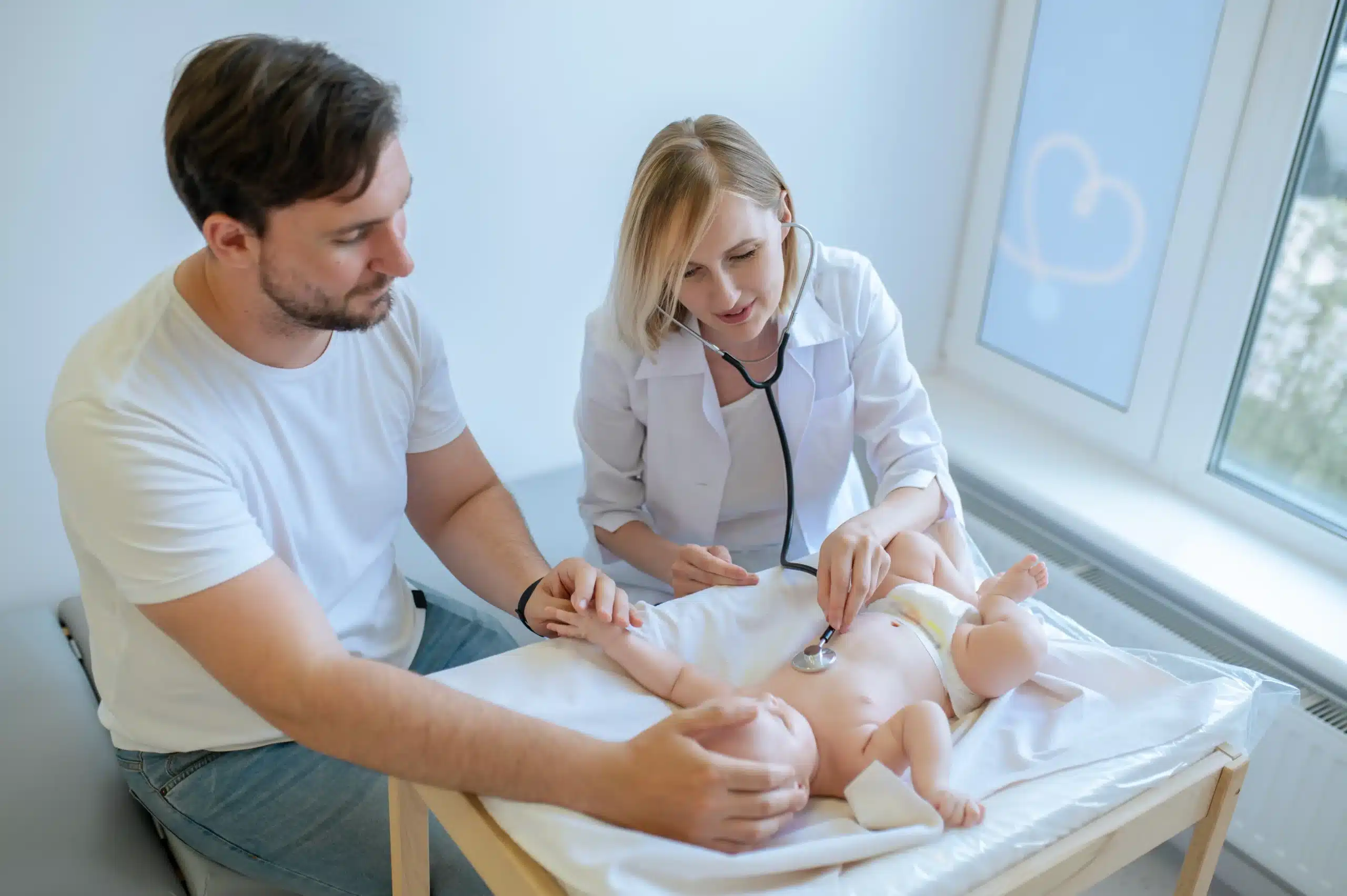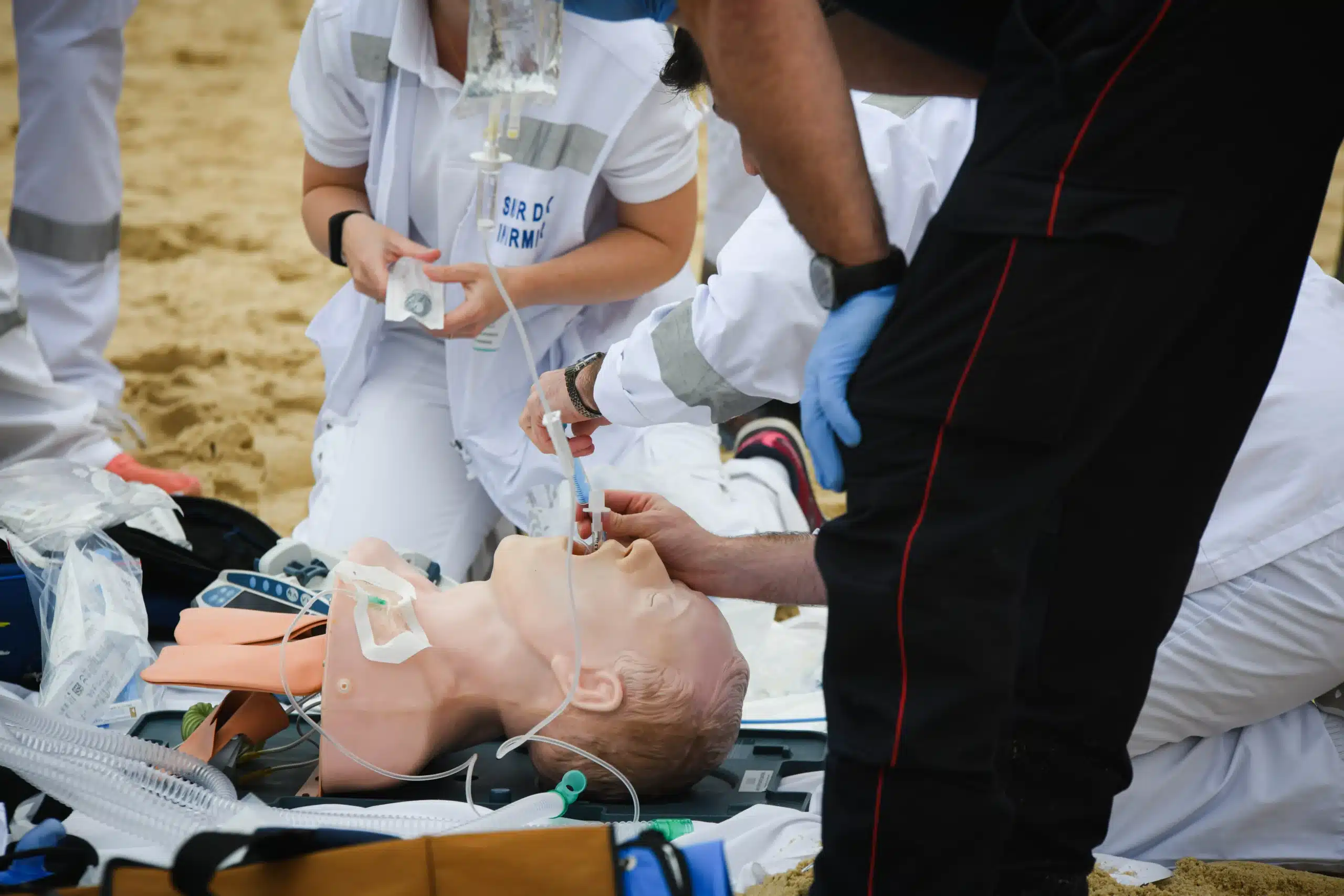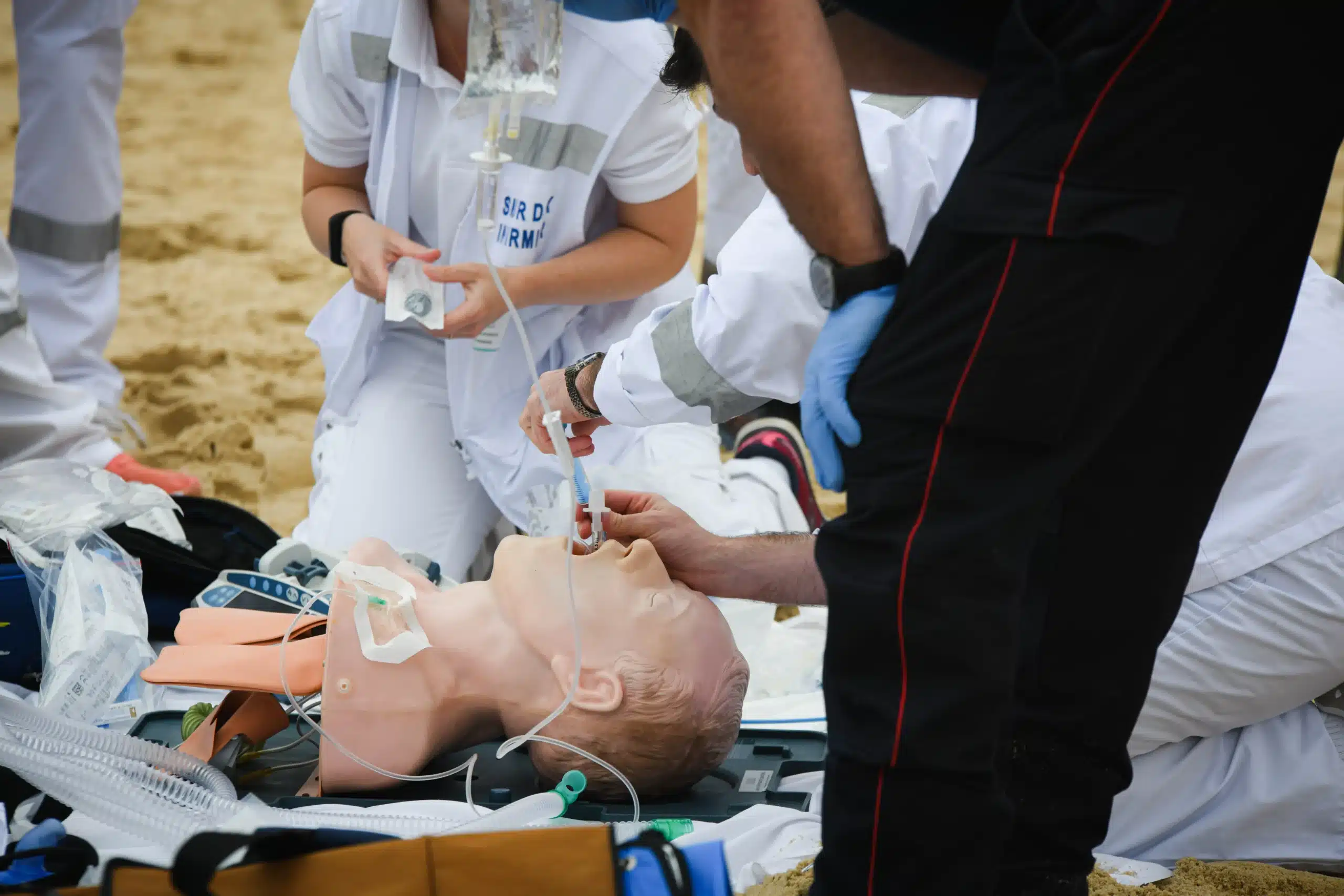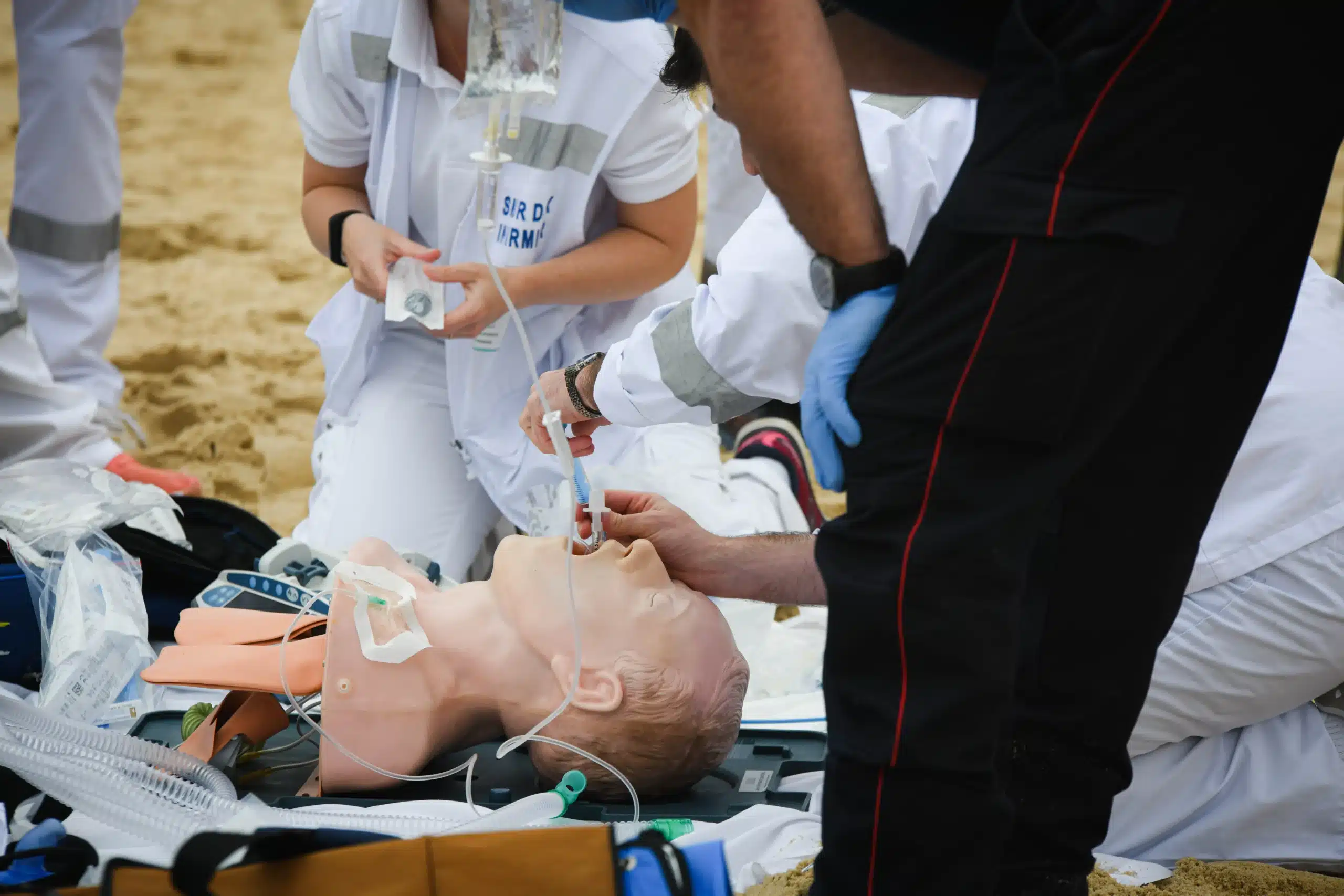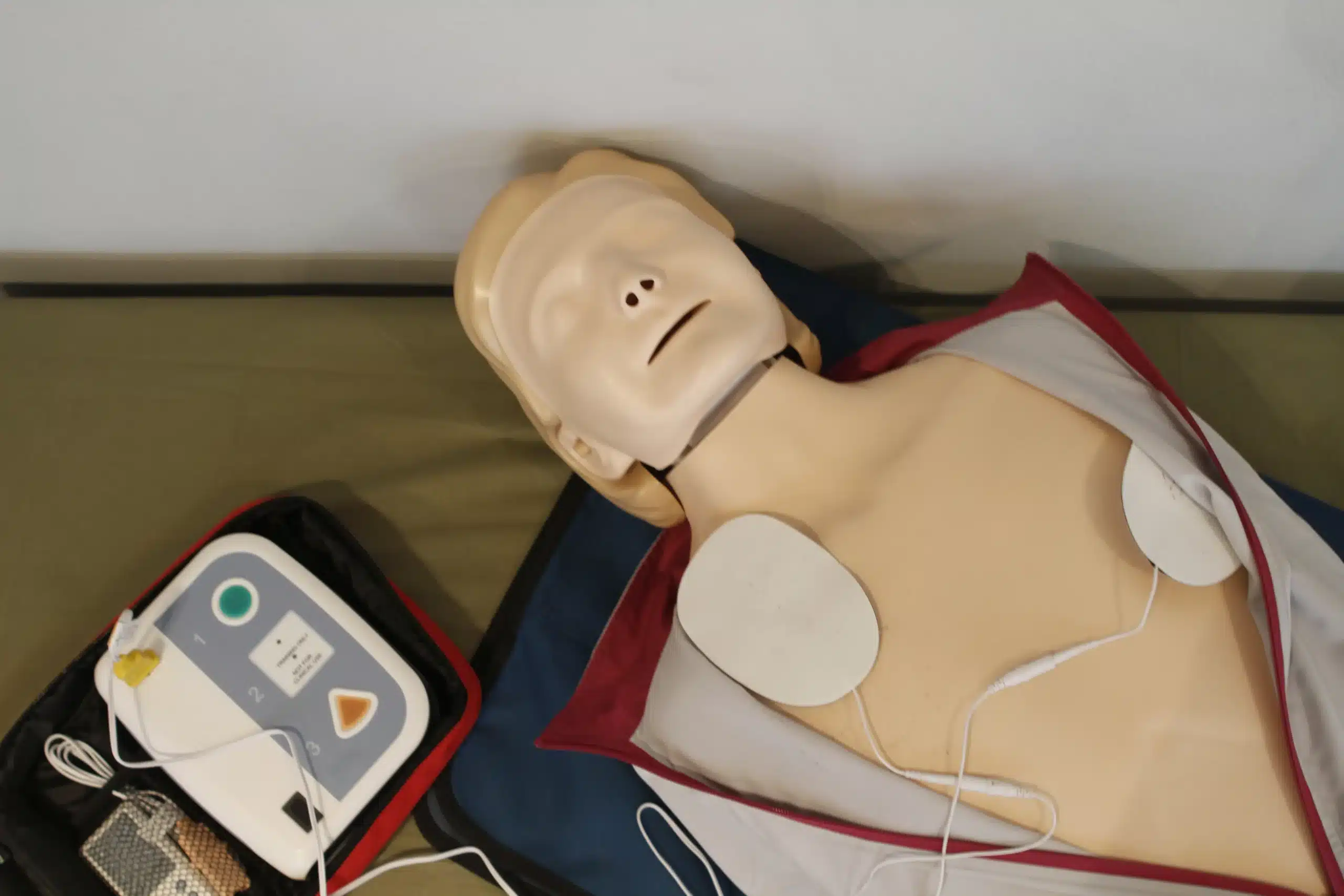Searching for “BLS classes near me”? You’ve come to the right place. Whether you’re a healthcare professional, a concerned caregiver, or simply someone who wants to be prepared, this guide will walk you through everything BLS. We’ll cover what BLS is, why it’s important, the key skills you’ll learn, and how to find the right class for your needs. From in-person and online options to blended learning, we’ll explore the various formats available. We’ll also discuss the importance of accreditation, how to research local options, and what to expect during a BLS class. Plus, we’ll address common misconceptions about BLS and CPR. Ready to empower yourself with life-saving skills? Let’s dive in.
Key Takeaways
- BLS builds upon CPR: It equips healthcare providers and first responders with advanced skills to manage life-threatening emergencies like cardiac arrest and respiratory distress. Consider BLS if you work in healthcare or want to be prepared for any medical crisis.
- Choose a course that fits your needs: Think about your learning style and schedule when selecting a BLS class. Many providers offer in-person, blended learning, and online options (with required in-person skills checks). AHA certification is often preferred by employers.
- BLS training is a valuable investment: It provides essential life-saving skills and can open doors to career advancement. Explore available discounts and payment options to make training more accessible. Compare prices and course content to find the best value.
What is BLS?
BLS Definition and Importance
Basic Life Support (BLS) is a step up from standard CPR. It’s a more advanced certification designed for healthcare providers, first responders, and anyone in a field where they might need to respond to medical emergencies. BLS covers everything in a CPR course—adult, child, and infant CPR—and adds techniques for cardiac arrest, respiratory distress, and airway obstructions. Think of it as CPR plus essential extras. For more information, visit our BLS page.
BLS certification gives you the skills to confidently handle these emergencies. You’ll learn CPR, how to use an AED (automated external defibrillator), and airway management techniques. These skills are critical for anyone working in healthcare or a related field. It also empowers you to act quickly and effectively in any crisis, potentially improving outcomes.
Key BLS Skills
BLS training covers several core skills. You’ll learn CPR for adults, children, and infants, including chest compressions and rescue breaths. The course also teaches you how to use an AED safely and effectively. Because obstructed airways are a common cause of respiratory emergencies, you’ll learn techniques to clear them. Beyond these core skills, BLS training often includes instruction on team dynamics during a medical emergency and effective communication with other rescuers. Our CPR and first-aid page offers additional details on related certifications.
Find BLS Classes Near You
Finding the right BLS class depends on factors like your learning style, schedule, and location. Let’s explore the different class formats available.
In-Person BLS Classes
In-person BLS classes offer a hands-on learning experience guided by a certified instructor. These courses provide a structured environment for practicing essential skills like CPR, using an AED, and providing first aid. In-person training is ideal for those who learn best through direct interaction and demonstration. Providers like Safety Training Seminars and the American Heart Association offer these classes, ensuring comprehensive instruction and certification upon completion. These classes cater to various participants, from healthcare professionals to those seeking general knowledge.
Online BLS Classes
While online BLS courses offer flexibility and convenience, it’s crucial to understand the requirements for certification. The American Heart Association (AHA) mandates a hands-on skills assessment for BLS certification. This means a fully online option for AHA certification isn’t available. You’ll need to find a course that combines online learning with an in-person skills check. Check with your certifying body to confirm their requirements before enrolling in any online BLS course.
Blended Learning BLS
Blended learning BLS combines the convenience of online learning with the benefits of in-person instruction. You’ll complete the theoretical coursework online at your own pace, then attend an in-person session for a hands-on skills assessment. This approach offers flexibility for busy schedules while still ensuring you receive the necessary practical training. Pleasanton CPR Classes offers this blended learning format, as does the Red Cross, allowing you to choose the format that best suits your needs.
Find Reputable BLS Training
Finding a reputable Basic Life Support (BLS) training provider is crucial for receiving high-quality instruction and a recognized certification. Here’s what to consider when selecting a BLS course:
Accreditation and Certification
The American Heart Association (AHA) sets the gold standard for BLS Certification. Many employers, including hospitals and clinics, require AHA-approved certifications to ensure their staff is trained to the highest standards. Look for a training center, like Pleasanton CPR Classes, that’s an official AHA Training Center. This designation means the center meets the AHA’s rigorous standards for instruction, materials, and equipment. This ensures you receive a high-quality education and a certification recognized by medical professionals and employers alike.
Research Local Options
Finding a convenient location simplifies your training experience. Research local options that fit your schedule and location preferences. Several organizations offer BLS classes in Pleasanton, including Safety Training Seminars, the American Red Cross, and local hospitals or medical centers. Pleasanton CPR Classes offers accessible and convenient training, serving Pleasanton, Dublin, and San Ramon, CA. They provide a low price guarantee and have courses available daily, making it easier to fit training into your busy schedule.
Check Reviews and Testimonials
Before signing up for a BLS class, check online reviews to understand other students’ experiences. Sites like Yelp, Google Reviews, and Facebook can offer valuable insights into student satisfaction, instructor quality, and the overall class experience. Pay attention to reviews that mention BLS certification and hands-on training. Pleasanton CPR Classes emphasizes providing affordable, high-quality, and convenient CPR training and highlights the importance of knowing CPR. Look for a provider with a similar commitment to quality and student success. Positive reviews often indicate a provider’s commitment to effective and engaging instruction.
What Happens in a BLS Class?
Taking a BLS class is a rewarding experience, and knowing what to expect can help you feel prepared and confident. From the course structure to the hands-on practice, here’s a glimpse into what your BLS learning journey will entail.
Course Structure and Duration
BLS certification courses are designed to fit a variety of schedules and learning preferences. You’ll find options for in-person classes, online learning, and blended learning programs that combine online coursework with in-person skills sessions. The format you choose will influence the overall duration of the course. In-person classes often take place over a day or weekend, while online and blended learning options offer more flexibility. Regardless of the format, BLS courses are designed to be comprehensive and efficient, ensuring you gain essential life-saving skills without a huge time commitment. Providers like Safety Training Seminars and the American Heart Association offer a range of courses to suit different needs.
Topics Covered
BLS certification equips you with the skills to respond to various medical emergencies. You’ll learn adult, child, and infant CPR, covering techniques for single-rescuer and team-based scenarios. The curriculum also includes training on how to use an automated external defibrillator (AED) and how to relieve airway obstructions in both conscious and unconscious individuals. Beyond these core skills, BLS classes emphasize critical thinking, problem-solving, and teamwork—essential for effective emergency response. Many courses, like those offered by Pleasanton CPR Classes, also incorporate the latest scientific guidelines and recommendations from organizations like the American Heart Association.
Hands-On Practice
A crucial component of any BLS class is the hands-on practice. You’ll have the opportunity to apply the skills you learn in a simulated environment, using mannequins and other training equipment. This practical experience builds your confidence and muscle memory, allowing you to react effectively under pressure. Instructors provide guidance and feedback, ensuring you develop the correct techniques for chest compressions, rescue breaths, and AED use. This focus on hands-on training is what truly prepares you to respond confidently in real-life emergencies. Safety Training Seminars, for example, prioritizes hands-on training in their courses. They understand that practicing these skills in a safe and controlled environment is key to mastering them.
Get BLS Certified
Getting your BLS certification is straightforward. Here’s a step-by-step guide:
Steps to Certification
-
Choose a Training Provider: First, find a certified training center. The American Heart Association offers BLS CPR classes in Pleasanton for various groups—from healthcare providers and first responders to educators and the general public. Pleasanton CPR Classes is an AHA Training Center, making us a convenient choice for your BLS needs.
-
Select Your Course Format: Decide which learning style works best for you. Pleasanton CPR Classes offers blended learning, combining online coursework with in-person skills sessions. This flexible option lets you learn at your own pace before practicing with a certified instructor. We also offer traditional classroom courses.
-
Complete the Training: BLS certification gives you essential life-saving skills. You’ll learn CPR, AED use, and airway management techniques to confidently respond to medical emergencies. Our instructors foster a supportive learning environment where you can ask questions and develop these vital skills.
-
Pass the Assessment: After completing the training, you’ll take a skills assessment to show your proficiency. This usually involves performing CPR and other BLS techniques on a manikin while receiving instructor feedback. Real-time feedback00716-7/fulltext) helps you refine your technique and prepares you for real-world scenarios.
Certification Renewal
Your BLS certification is valid for two years. Here’s what you need to know about renewing it:
-
Recertification Requirements: To maintain your BLS certification, you must complete a recertification course before your current certification expires. This ensures your skills and knowledge are current.
-
Renewal Training Options: Like initial certification, you can choose from several recertification course formats, including in-person, online, or blended learning. Recertification courses cover the same core material as the initial course, reinforcing essential skills and incorporating updated guidelines.
-
Importance of Staying Current: Medical guidelines and best practices evolve, so staying current with your BLS certification is essential. Regular renewal training reinforces your skills and knowledge, allowing you to provide high-quality care in emergencies. It also shows your commitment to maintaining your competency as a healthcare provider or first responder.
Choose the Right BLS Class
Finding the right BLS class means considering your learning style, schedule, and career requirements. Taking the time to think about these factors will ensure you get the most from your training.
Consider Your Learning Style
Think about how you learn best. Do you thrive in a traditional classroom with face-to-face interaction? Or do you prefer the flexibility of online learning? Many organizations offer blended learning that combines online coursework with in-person skills sessions. Pleasanton CPR Classes offers a variety of course formats to suit different learning preferences. Consider what approach has worked best for you in the past and choose a BLS class that aligns with your learning style.
Evaluate Your Schedule
Your schedule is a major factor when choosing a BLS class. Pleasanton CPR Classes understands busy schedules and offers courses daily, making training accessible and convenient. Look for a program with class times that easily fit into your existing commitments. This flexibility lets you complete your BLS training without major disruptions.
Assess Career Requirements
Before signing up, make sure the class aligns with your career goals. Some professions require AHA-approved BLS certification, so check with your employer or professional organization. Pleasanton CPR Classes provides AHA-compliant training, ensuring your certification meets industry standards. Also, consider whether you need standard BLS certification or if you’re interested in becoming a BLS instructor. Understanding your career path and requirements will help you choose the most relevant course. For example, if you are a healthcare provider, you’ll need a healthcare provider BLS certification. Pleasanton CPR Classes offers BLS for Healthcare Providers to meet this specific need.
BLS Class Costs & Discounts
Getting BLS certified is an investment in your skills and career, so understanding the costs is important. Let’s break down the typical price range, factors that influence cost, and ways you can save.
Average Price Range
BLS certification, which often includes CPR training, typically ranges from $20 to $60 for online courses. This usually covers the online training materials, the certification exam, and a digital or physical certification card. For in-person BLS training through organizations like the American Heart Association (AHA) or the Red Cross, expect to pay around $100. Keep in mind, this can vary based on where you live and who is offering the BLS course. Pleasanton CPR Classes offers a low price guarantee to ensure you’re getting the best value.
Factors Affecting Cost
Several things can affect the cost of a BLS class. Online courses are generally more affordable than in-person classes because of lower overhead costs. The reputation of the training provider also plays a role. Well-established organizations like the AHA often charge a bit more because of their recognized certification and training quality. Location matters too—prices can differ between cities. Finally, the course content itself can influence the cost. If a course includes additional certifications like ACLS or PALS, the price will likely be higher.
Discounts and Promotions
Many training centers offer discounts and promotions to make BLS certification more accessible. Look for group discounts if you’re registering with colleagues or friends. Pleasanton CPR Classes offers group discounts, so be sure to ask about those. Some providers also offer seasonal promotions or discounts for members of specific organizations. It’s always a good idea to check with local training centers or online providers for any current deals.
Top BLS Training Providers
Finding the right BLS training provider is crucial for a high-quality, recognized certification. Several respected organizations offer BLS certification courses, each with its own strengths. Here’s a rundown of some leading options:
American Heart Association (AHA)
The American Heart Association often sets the standard for BLS certification. Many employers, especially in healthcare, prefer or require AHA-approved certifications to ensure their staff receives top-notch training. AHA courses are known for their rigorous curriculum and focus on evidence-based practices.
American Red Cross
The American Red Cross is another well-known provider of BLS training and certification. They offer various course formats—online, in-person, and blended learning—to suit different learning styles and schedules. The Red Cross is a trusted name in emergency preparedness, and their BLS courses reflect this expertise.
National Safety Council
The National Safety Council partners with training centers across the country to deliver various safety training programs, including BLS. Their focus on practical skills and real-world scenarios equips people with the knowledge and confidence to respond effectively in emergencies.
Health & Safety Institute (HSI)
HSI offers a range of training programs, including BLS, CPR, and First Aid. They emphasize practical skills and real-world application, making their courses relevant for various professional settings. HSI is known for its comprehensive approach to safety training.
ProTrainings
ProTrainings provides online and blended learning options for BLS certification. This flexible approach works well for busy professionals who need to fit training into their schedules. ProTrainings focuses on making BLS training accessible and convenient.
American Safety & Health Institute (ASHI)
ASHI offers comprehensive BLS training that meets OSHA requirements. Their certification is widely recognized across various industries. ASHI’s focus on workplace safety makes their BLS training relevant for many professional contexts, providing a solid foundation in BLS principles and techniques.
Common BLS Misconceptions
It’s easy to get confused about BLS certification, especially when you’re just starting your research. Let’s clear up some common misconceptions about BLS classes and who they’re for.
BLS vs. CPR
One of the biggest misunderstandings is the difference between BLS and CPR. While both teach lifesaving skills, BLS (Basic Life Support) certification is more advanced than CPR and is designed for healthcare professionals, like doctors, nurses, and EMTs. BLS covers everything in a CPR course, plus advanced techniques for cardiac arrest, respiratory distress, and airway obstructions. Think of CPR training as providing the essential first-aid skills, while BLS certification adds a deeper level of knowledge for those working in healthcare settings.
Importance of In-Person Skills
While some CPR certifications offer fully online options, the American Heart Association (AHA) requires an in-person skills assessment for BLS certification. This hands-on component is critical for developing muscle memory and receiving real-time feedback from a certified instructor. Studies show that in-person training with feedback significantly improves the performance of BLS skills—both immediately after training and weeks later. This personalized instruction ensures you’re fully prepared to use these skills in a real-life emergency.
Who Benefits from BLS Training
Although BLS certification is geared towards healthcare providers and first responders, many others can benefit from BLS training. Anyone working in a field where they might need to respond to a medical emergency—such as teachers, coaches, lifeguards, or childcare providers—can gain valuable skills and confidence from a BLS course. Even if it’s not required for your job, taking a BLS class can equip you with the knowledge and skills to potentially save a life. These comprehensive courses cover a wide range of emergency situations, giving you the tools to respond effectively and confidently.
Related Articles
- BLS Certification in Dublin: A Practical Guide – Pleasanton CPR Classes
- Basic Life Support (BLS) in Pleasanton: Your Complete Guide
- BLS Classes in Dublin: A Comprehensive Guide
- BLS for Healthcare Providers in Dublin: A Complete Guide – Pleasanton CPR Classes
- Your Guide to BLS Renewal in Pleasanton – Pleasanton CPR Classes
Frequently Asked Questions
Is BLS certification the same as CPR certification?
No. BLS (Basic Life Support) builds upon the foundational skills taught in CPR (Cardiopulmonary Resuscitation) courses. BLS certification is more comprehensive and includes advanced techniques for managing cardiac arrest, respiratory distress, and airway obstructions, often in a team setting. While CPR training provides essential first-aid skills, BLS adds a deeper level of knowledge and skill, making it suitable for healthcare providers and those in related fields.
What does a BLS class typically cover?
A BLS class covers core life-saving techniques, including adult, child, and infant CPR; how to use an automated external defibrillator (AED); and how to relieve airway obstructions. The curriculum also emphasizes critical thinking, problem-solving, and teamwork in emergency situations. Many courses incorporate the latest guidelines from organizations like the American Heart Association, ensuring you learn the most up-to-date procedures.
How long does it take to get BLS certified?
The time commitment for BLS certification varies depending on the course format. In-person classes can often be completed in a day or over a weekend. Blended learning options, which combine online coursework with in-person skills sessions, offer more flexibility, allowing you to complete the online portion at your own pace before attending a shorter in-person skills assessment.
How much does a BLS class cost?
The cost of a BLS class depends on several factors, including the course format (online or in-person), the training provider, and your location. Online courses tend to be more budget-friendly, ranging from $20 to $60. In-person training through established organizations like the American Heart Association or the Red Cross typically costs around $100. Look for training centers that offer discounts, such as group rates or special promotions.
How often do I need to renew my BLS certification?
BLS certification is typically valid for two years. To maintain your certification, you’ll need to complete a recertification course before it expires. Recertification ensures your skills and knowledge remain current with the latest medical guidelines and best practices. Like initial certification courses, recertification is offered in various formats, including in-person, online, and blended learning.
